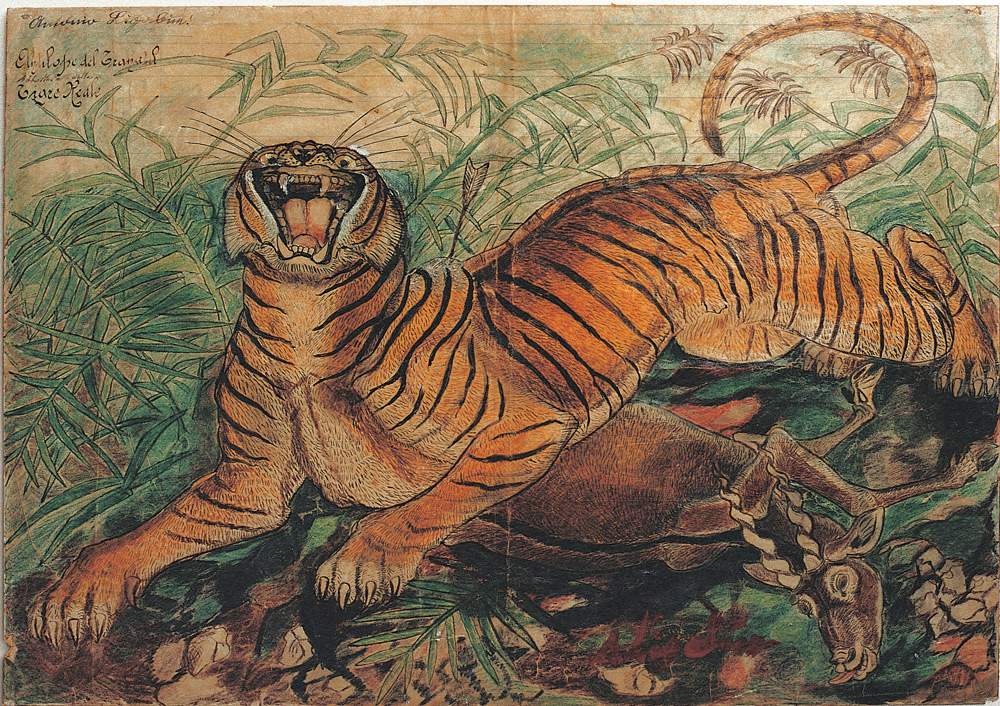The art of Antonio Ligabue stars in Genoa with an exhibition at Palazzo Ducale
A major anthological exhibition tracing the human and artistic life of Antonio Ligabue (Zurich, 1899 - Gualtieri, 1965), one of the most interesting artists of the 20th century, is coming to the Palazzo Ducale in Genoa. The exhibition, scheduled from March 3 to July 1, 2018, aims to delve especially into two main nuclei of Ligabue’s production: animals (both wild and domestic) and self-portraits. The exhibition will feature several works from private collections in the painter’s home territory: Ligabue, who resided for a long time in Gualtieri, in the province of Reggio Emilia, was in fact a very prolific artist and used to give his paintings as gifts to the inhabitants of his lands. The exhibition is curated by Sandro Parmeggiani and Sergio Negri and is produced and organized by ViDi together with the Antonio Ligabue Foundation of Gualtieri, in collaboration with the City of Genoa and Palazzo Ducale Fondazione per la Cultura.
A total of eighty works will enliven the Palazzo Ducale’s itinerary: first the works depicting domestic and woodland animals, “caught in a rustic atmosphere, set in landscapes in which he juxtaposes the flat lands of the Bassa reggiana, where he lived from 1919 to his death in 1965, and the castles, churches, spires and houses with flags in the wind on the steep roofs of his native Switzerland,” as the presentation reads, and those of wild animals, “often caught in the moment when they are about to pounce on their prey, with an’expressionist-like exasperation, both in form and color, and with an almost spasmodic attention to the reiteration of decorative elements.” It then goes on to investigate the self-portraits, which “constitute a strand of the highest and bitterest poetry in Ligabue’s art,” and which “epitomize a perennial and constant human condition of anguish, desolation and bewilderment, a slow journey toward the final outcome; his face expresses pain, fatigue, dismay, the pain of living; every relationship with the world seems to have been forever severed, as if the artist could now only recount, for one last time, the tragedy of a face and a gaze, which does not care to see the things around it, but which asks, at least for once, to be looked at.”
Ligabue’s self-portraits, Sandro Parmeggiani points out, “tell all the artist’s suffering; we can almost hear his mute cry in the silence of nature and in the deafness of the people around him. When all hope is lost, now made ashes, the face cannot but have this dark, muddy color, this sort of petrification of features that pain has brought with it and imprinted on it.”
The exhibition comes after exhibitions in Gualtieri (2015), Palermo (2016), Rome (2016) and Pavia (2017) to bring Ligabue’s work back to the attention of critics and to reaffirm the appeal of an artist too hastily referred to as “naïf” or crazy. The exhibition, titled simply Antonio Ligabue, opens Tuesday through Sunday from 10 a.m. to 7 p.m. (closed Mondays, ticket office closes one hour earlier). Tickets, audio guide included: full 11 euros, concessions 9 euros, schools and children ages 6 to 12 4 euros. Media partner Radio Montecarlo, catalog published by Skira.
Image: Antonio Ligabue, Royal Tiger (1941; India ink and wax pastels on letterhead of San Lazzaro Psychiatric Hospital in Reggio Emilia, 36 x 50 cm; Reggio Emilia, private collection).
 |
| The art of Antonio Ligabue stars in Genoa with an exhibition at Palazzo Ducale |
Warning: the translation into English of the original Italian article was created using automatic tools. We undertake to review all articles, but we do not guarantee the total absence of inaccuracies in the translation due to the program. You can find the original by clicking on the ITA button. If you find any mistake,please contact us.



























